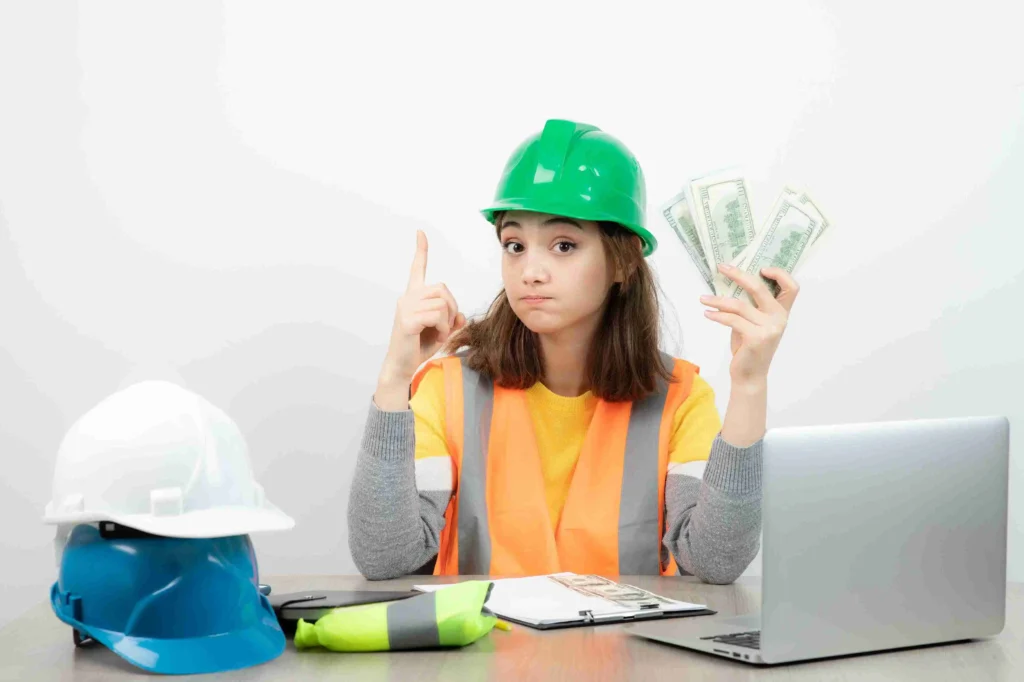Want to know how much it costs to build a house in 2025? Many people do, because prices are rising and home buyers hunt for fresh strategies to save money. If you are building a new home or upgrading an existing one, you should know all the costs to stay within budget. Here’s a complete breakdown of what you should know for our next house:
Understanding Builder Cost to Build a House
The builder cost to build a house means every rupee, dollar, and resource spent from foundation to final fixtures. This covers everything: labor, materials, permits, contractor fees, and those small extras that add up. Costs aren’t fixed for location, builder, and home style, which can make a huge difference from one city or suburb to another.
Factors Affecting Builder Costs
Prices don’t just rise because the market is changing; there are real reasons behind the numbers. Builder costs respond to:
- Land price (urban = more expensive)
- Material prices (steel, cement, and timber) fluctuate.
- Labor shortages (a big factor in 2025, especially in big cities)
- Permit and compliance costs (affect all new builds)
- Custom features and luxury upgrades (unique kitchens, floors, smart tech)
- House design complexity (curved walls, basements, and non-standard shapes)
- Weather or seasonal delays (rain, heatwaves, etc.)
If you’re building a home, ask your builder for a detailed list. Compare their breakdown visually or by bullet points; we will make it much easier to spot savings or risks.
For expert guidance on budgeting and financing your new home, check out Kristin Egmont’s Connecticut home-buying resources to make smart, informed decisions.
Builder Costs by House Type (Custom, Modular, Spec)
Every house style brings its own price tag. Here’s how costs typically break down:
- Custom homes: High prices are to be expected for distinctive styles and unique details. It may take longer and involve more planning to complete these constructions.
- Modular homes: Pre-fabricated sections lower labor needs. In most markets, modular homes save time and can reduce costs by up to 30%.
- Spec homes: Built by developers with set features. These offer less flexibility but usually mean faster timelines and predictable budgets.
Wondering if building a house is cheaper than buying? For modular and spec models, the answer is sometimes yes, especially in areas with high resale prices. Compare real-life examples to decide which model best fits your goals.
Read a useful guide for buyers exploring older properties:
How to Evaluate the Condition of a Historic Home Before Buying
Building a Home: Step-by-Step Cost Breakdown
Building a house is never an easy one-step process. It helps to break it down to provide you with information on where the money actually goes and what to expect from start to finish. Here’s a layout of each stage:
- Site Preparation: Clearing, grading, and setting up utilities—cost varies by location and existing plot conditions.
- Foundation Work: Can range from basic slabs to more expensive basements. Costs swing based on materials and soil testing.
- Framing and Structure: The main skeleton—timber or steel, plus walls and roof.
- Exterior Finishes: Siding, stucco, windows, doors, and sometimes landscaping at this stage.
- Interior Work: Flooring, drywall, painting, plumbing, electrical, and specialty installations.
- Systems Installation: HVAC, smart tech, and energy-efficient appliances bump up the total cost but save money later
- Final Touches: Kitchen cabinets, lighting fixtures, landscaping details, and walkways.
- Permits and Management Fees: Municipal fees, regulatory costs, and builder management fees, often about 10–20% of the total spend.
Permits, Taxes, and Other Hidden Costs
Beyond brick and mortar, hidden costs can surprise any budget. Watch for:
- Government permits: Building, environmental, and planning approvals are needed up front.
- Municipal taxes: Local taxes can increase the ongoing ownership cost.
- Impact charges: Costs associated with establishing connections to communal services such as electricity, water, and sewer.
- Homeowners association (HOA) fees: In some neighborhoods, these are mandatory.
- Unexpected hold-ups: Timeliness-extending regulatory obstacles, weather, or material shortages.
Hidden fees hurt, so use reputable sources for information and check for updated numbers every year.
Builder Fees and Payment Structures
Knowing how a builder charges is even more valuable than bargain hunting. Most follow three main models:
- Fixed Fee: Set price for the whole job. But you may pay more if materials surge in price.
- Cost-Plus: Builder bills for actual costs plus a defined markup, often 10–20%.
- Percentage-of-Cost: Fees based on a percentage of the total build (usually in the same 10–20% range).
Is It Cheaper to Build or Buy a Home?
If you are wondering what’s cheaper and what’s expensive, here’s a summarized comparison of both:
- Building: Higher initial spending, more control over design, and new technology, but risk of market fluctuations and surprises.
- Buying: Lower upfront cost for move-in-ready, but fewer customization choices and the possibility of needing upgrades.
Looking for a home in Connecticut?
Read here- Finding Your Dream Home: The Best Places to Live in Connecticut
Market Trends Influencing Costs (2025 Update)
The market shifts all the time. So, this is what you should know about building a home:
- Inflation drives the cost of steel, concrete, and labor up.
- Supply chain delays hit materials. Buy early and lock rates where possible.
- Regional differences, big cities mean higher prices, and smaller towns bring savings.
- Green building is in for both eco-conscious buyers and those planning long-term savings.
- Smart tech (home automation, energy monitors) is now a standard feature, changing budgets for new builds.
Real Examples: Is Building a House Cheaper Than Buying?
People want to see real numbers. Let’s look at a few:
- In Detroit and Houston, modular builds can cut costs by 20–30% compared to similar new homes on the market.
- In San Francisco, due to high land and permit fees, it’s often 10–15% cheaper to buy a house than to build from scratch.
- In Bangalore, modular homes save buyers up to ₹10 lakh compared to custom builds, especially when local labor is scarce.
Tips for Reducing Builder Costs
Ready to build real savings for your down payment? We’ve gathered some practical tips you can use to grow your funds more effectively and reach your homeownership goal faster.
- Plan before you start: Early decisions about size, layout, and features keep things on track.
- Choose efficient designs: Less complexity means lower costs.
- Bulk buy materials: Builders can often get discounts for larger purchases.
- Begin when the seasons are not busy: Builders can give lower prices when there is low demand.
- Bargain like a boss: Inquire of the constructors whether they can negotiate on charges.
- Monitor your budget every week: With the help of apps or spreadsheets, you can keep it under control.
- Inquire about modulars: Readymade pieces can conserve time as well as money.
Conclusion
Building a house in 2025 can be difficult but rewarding. Understanding the whole of the builder cost to build a house, including fees, materials, market trends, and hidden costs, will help you manage your budget. Expert advice and careful expense tracking can help in making necessary plan adjustments.
Not sure whether to build from scratch or buy move-in ready?
Kristin Egmont, your trusted Connecticut real estate expert, can help you compare options, find land, or connect with reputable local builders. Get expert help from Kristin Egmont and make a smart move toward your dream home!
FAQ – Builder Cost to Build a House
Q1.What is included in the quote of a builder?
Ans. The quote made by a builder typically includes materials, labor, permits, and a management fee. It can also give charges for site preparation, utility connections, and certain finishes. It is always advisable to read the contract carefully and ask questions to understand what is not part of the contract in order to avoid the shock later.
Q2. What is the actual cost of constructing a house?
Ans. You can use reliable calculators on websites such as HomeAdvisor to enter the location, size, and features to have a rough estimate. The quotes may be real only after consulting local builders or architects, and include land, permitting, and other unforeseen extras, to come up with a realistic total.
Q3. Is location an issue in builder cost?
Ans. Yes, urban construction is costlier due to constraints of land and labour, and permit costs are high. A rural construction might be cheaper in terms of land and labor, but might require additional expenses in terms of transportation or off-site amenities, which affect your final budget.
Q4.Where are the significant threats in constructing and budgeting?
Ans. The longest risks are delays, surging labor prices, or material prices, and unexpected permit prices. Late or site design problems can cause a loss of your budget, and you should follow every step, talk to your builder, and have a backup fund in the form of cash.
Q5. How could one finance the construction of a house cheaply?
Ans. Construction loans are issued in instalments and tend to be converted into a mortgage on completion. Use lenders to shop around and find local incentives or grants to build a green or rural house to reduce your long-term expenses.




